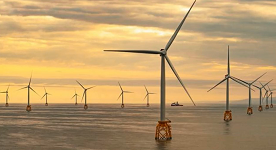“Black Sea Bass & Offshore Wind Energy” (watch on VIMEO, 4 minutes and 57 seconds, ages 14 and up)
Up to 3.5 million acres of wind farms, much of it off New Jersey, are being planned for offshore waters of the northeastern U.S. in the coming decade. While that will provide a great deal of clean electric power ashore, it will not be without consequences for many ocean fisheries. Black sea bass is a fish species that is strongly attracted to underwater structures, and the presence of hundreds of new structures in places where there is no natural structure will almost certainly affect their numbers, distribution, and/or migration routes, but it is not at all clear how. National Marine Fisheries Service J.J. Howard Lab investigators are considering the use of computer modeling schemes to explore in advance what may happen with this and other important fish species upon which our commercial and recreational fisheries industries depend.
NOAA Fisheries is responsible for the stewardship of the nation’s ocean resources and their habitat. The Lab provides vital services for the nation: productive and sustainable fisheries, safe sources of seafood, the recovery and conservation of protected resources, and healthy ecosystems – all backed by sound science and an ecosystem-based approach to management. Visit the NOAA Fisheries website to learn more.
The James J. Howard Marine Sciences Lab is uniquely situated in the Mid-Atlantic, on the Sandy Hook peninsula located about 12 miles from New York City. The primary mission of the Howard Lab is to conduct research in ecology, leading to a better understanding of both coastal and estuarine organisms and the effects of human activities on nearshore marine populations. Visit the Lab’s website to learn more.

